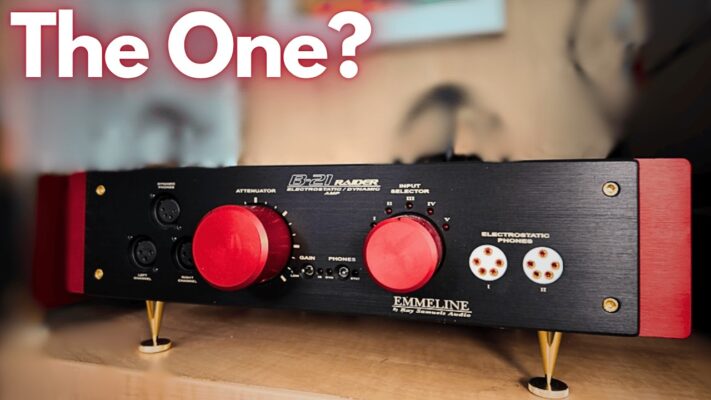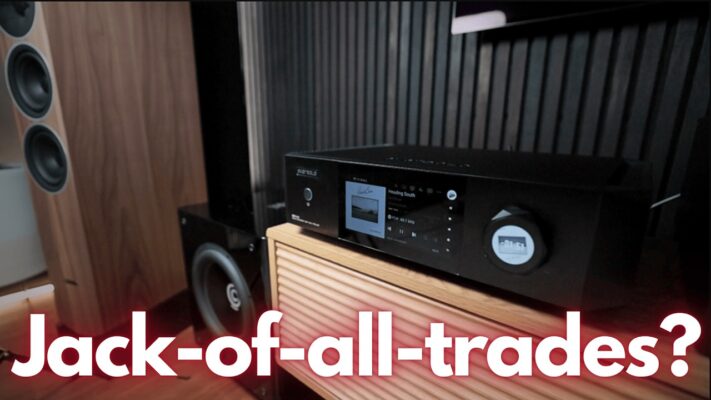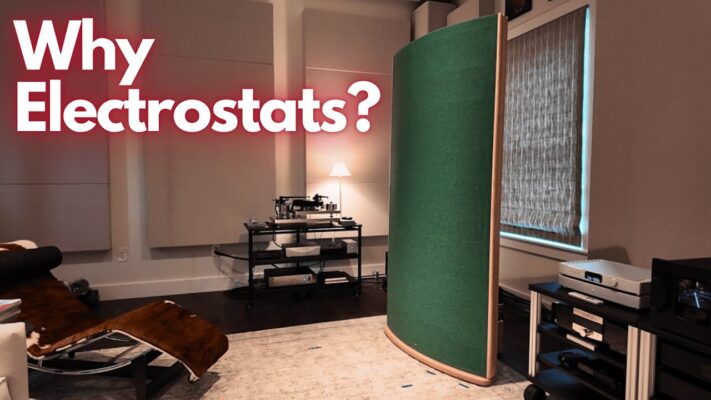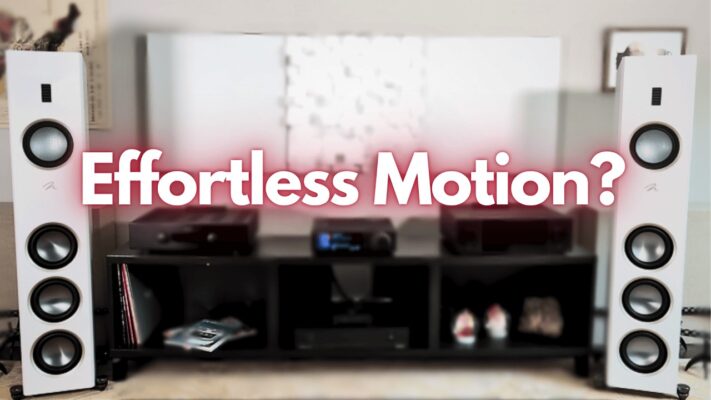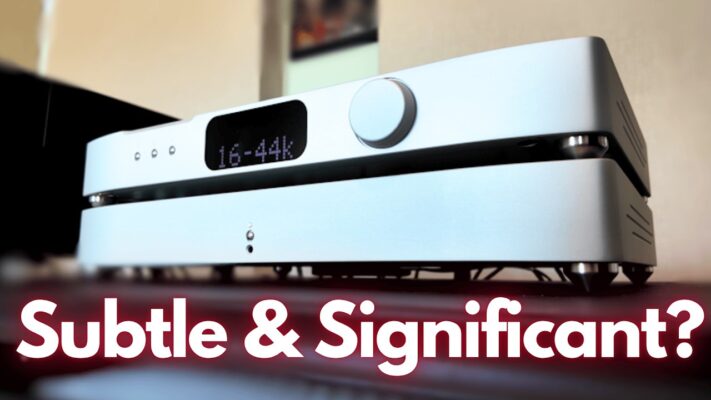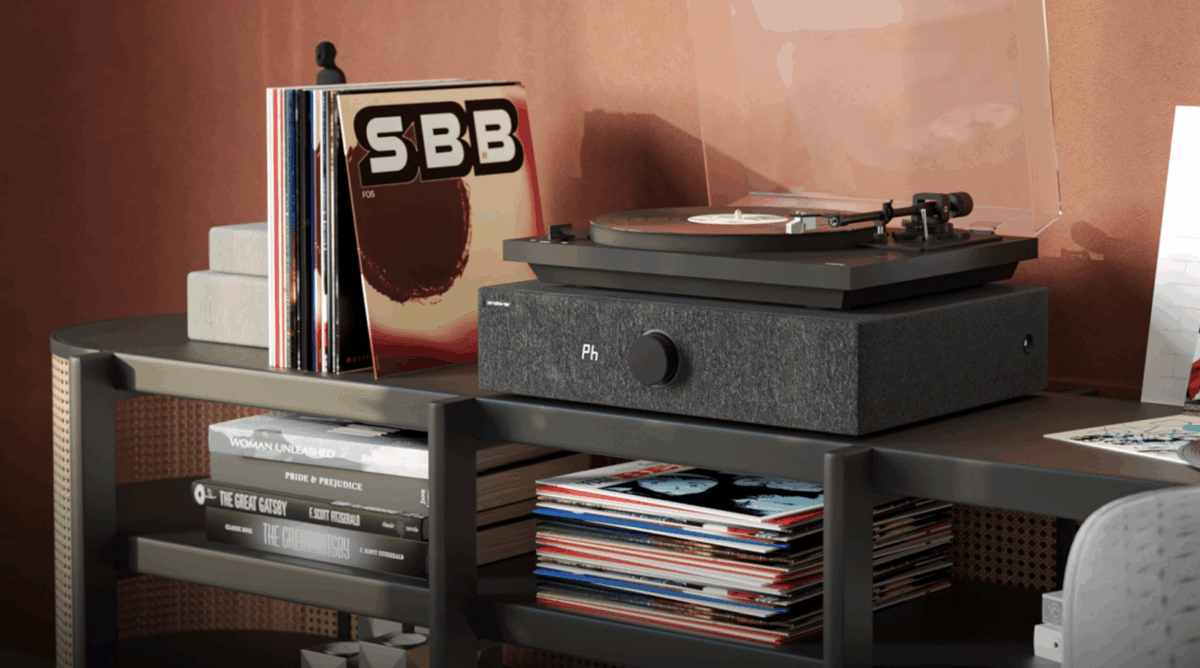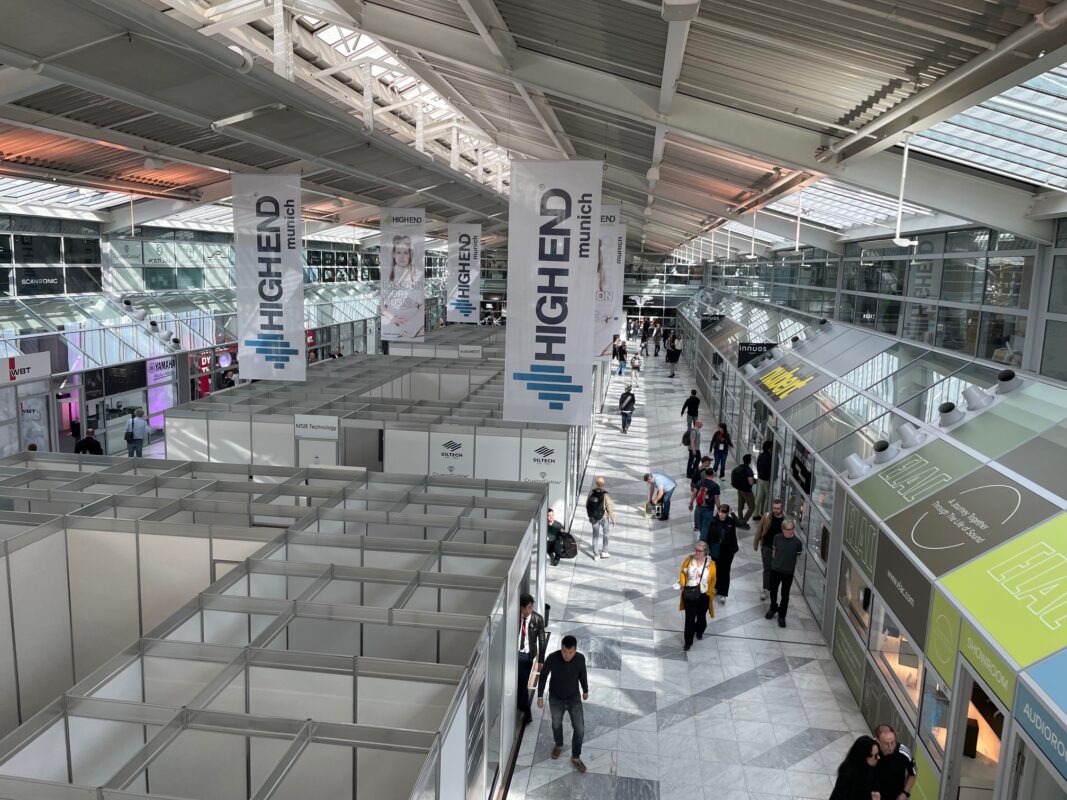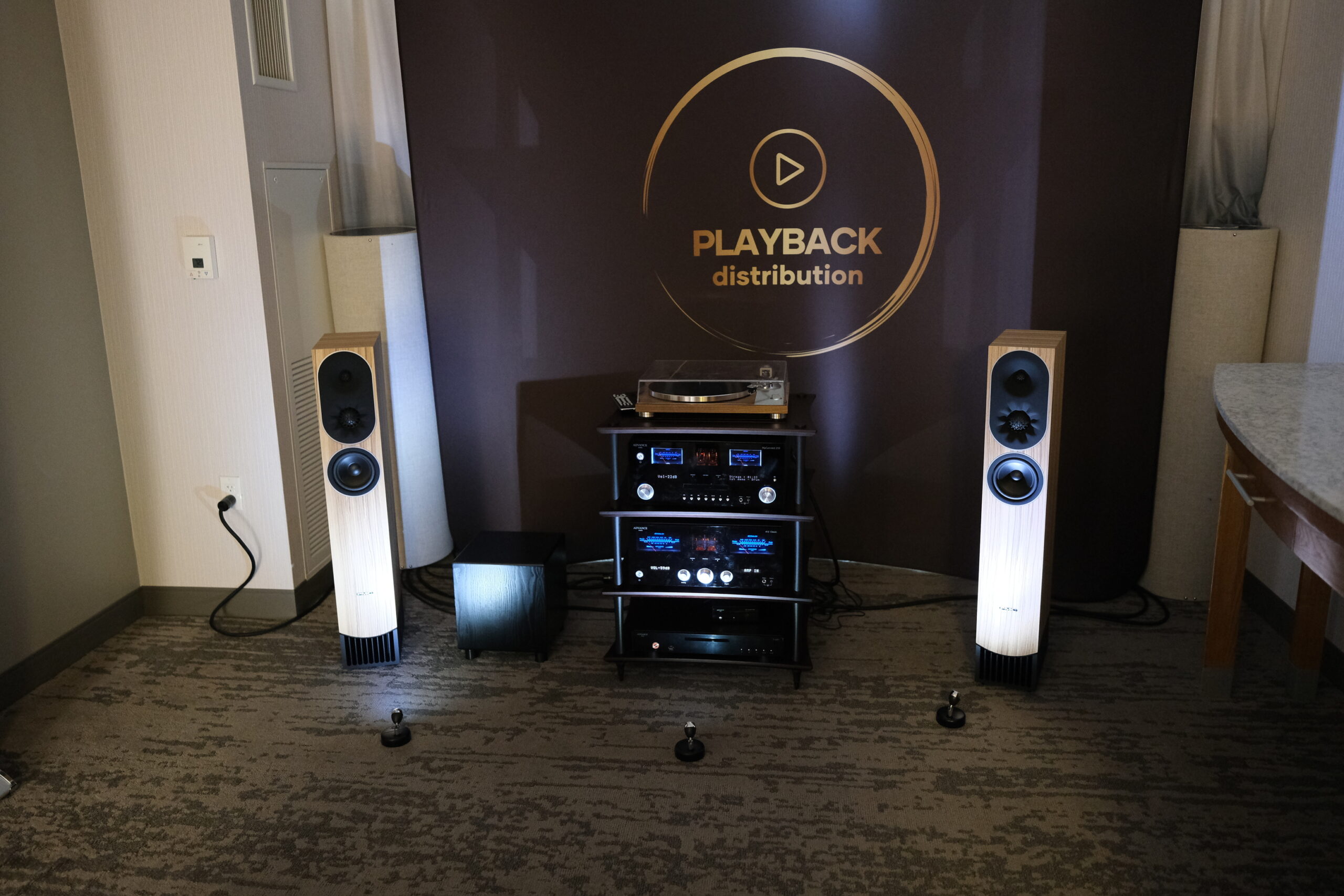
In an increasingly unpredictable world, the fact that AXPONA 2025 played out exactly as expected was something of a comfort. Old friends and familiar brands converged on Schaumberg from around the globe, “Hey, now” boomed through the halls, and steakhouses grilled up prime fare for the winers and diners.
In my category, there was just one surprise, which was the relative dearth of significant introductions. The tariff yo-yo has created an environment where exhibitors literally don’t know what they’re going to charge for their products. This isn’t an ideal setting for new product launches, and many exhibitors indicated that they would wait for Munich, hoping the trade situation would stabilize by then.
Nonetheless, I’m happy to report that there were still some noteworthy under-$50k speaker debuts. In fact, in a trend worth celebrating, most of those were in the sub-$10k price range. Here’s what caught my eyes and ears.
Most Significant
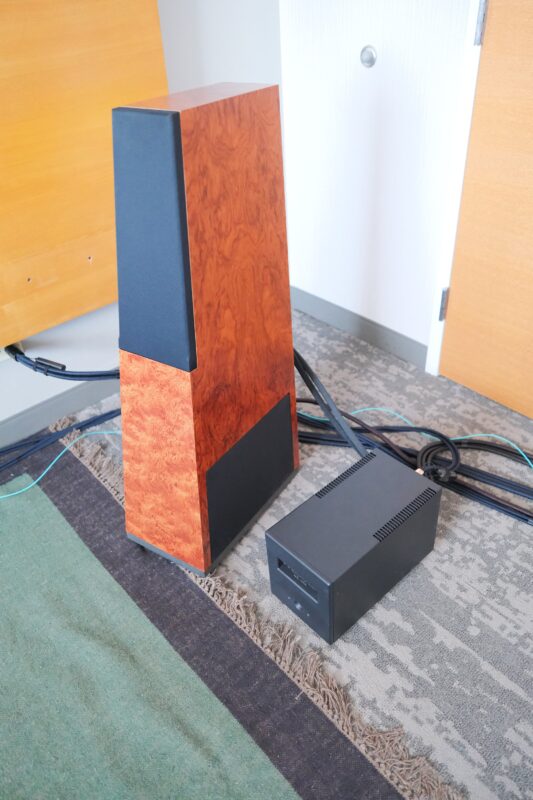
The release of any new Vandersteen is an occasion, and that may be even more true for the $23,900 Quatro CT EVO. Richard Vandersteen likes to design speakers that require a high-pass filter in front of them, but that requires unusually complicated sale and set-up processes. Ergo, we now have the Quatro CT EVO, which can be directly connected to any amplifier. Vandersteen also favors internal subwoofers, and here the new model is no exception. The CT EVO sports dual 8” side-firing woofers powered by a 300-watt Class B amp. At the show, the latest Vandy shone with the company’s natural house sound—the very opposite of the bombast you could find elsewhere. And though the demo pair were placed far apart, they nonetheless imaged beautifully. The Quatro CT EVO should be an easy sale.
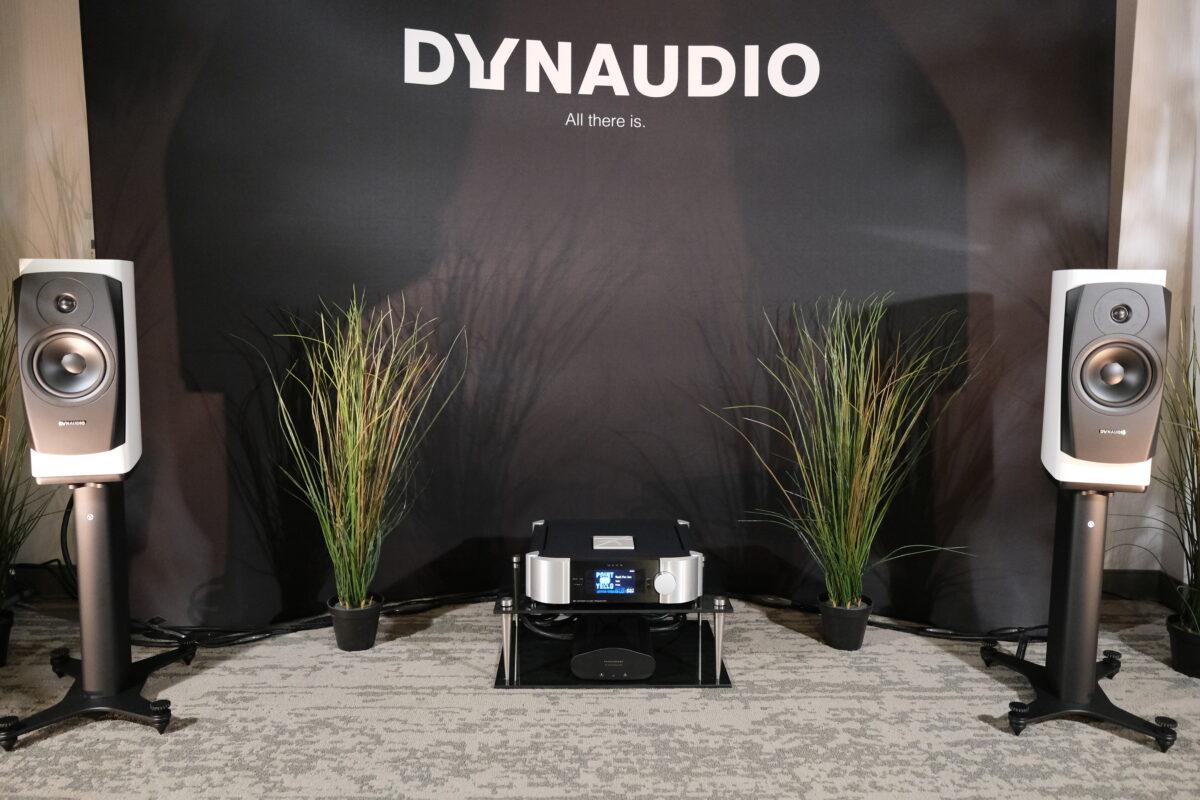
Denmark’s Dynaudio has been on a roll lately, and at AXPONA the momentum continued with the launch of two impressive newcomers. The Contour 20 Black Edition wowed me with its refined, transparent sound and $8k price tag. Don’t confuse this new model with the standard Contour 20i; they’re completely different (aside from the cabinet). In fact, the bulk of the Black Edition’s innards are of the same build quality as the also-new, slightly larger, and more expensive Confidence 20A (see below). Further, while most speakers at this price point are entirely made of wood, the Black Edition’s front baffle is ½”-thick aluminum recessed into its curved MDF cabinet.
Though the Black Edition is limited to a low end of 42Hz, the greater internal capacity and a combination of novel port tuning and onboard DSP of the Confidence 20A allows it to reach 33Hz. Playing at AXPONA the new active version showed off deep, powerful bass and highs that, as on the Contour 20 Black Edition, were extended, sparkly (but not bright), and smooth.
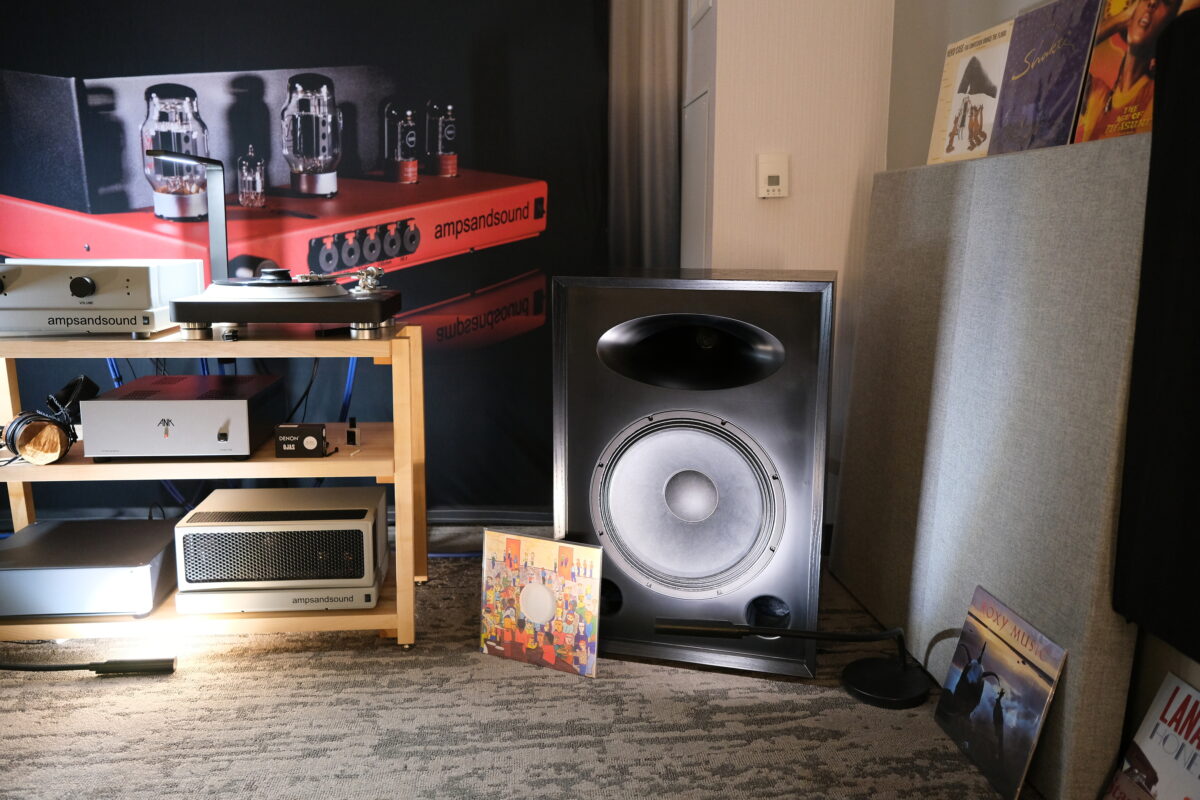
Ampsandsounds is best known for its namesake products, but the aptly named Sasquatch ($17k) may change that. With a front panel dominated by an enormous 18” woofer, you’d be forgiven for mistaking Sasquatch for one of those huge subwoofers with a Greek name. But make no mistake; this is very much a full-range speaker. Complementing the woofer, which is good for 30Hz, is an elliptical horn-loaded mid/tweeter. Together, the two drivers yield a sensitivity rating of a whopping 99dB. With sensitivity like that, you can drive the Sasquatch with as little as 8 watts, and that’s exactly what ampsandsounds did. Like many dynamic/horn hybrids, the Sasquatch sounded bold and dynamic. But this speaker also had the much rarer attribute of perfect balance between the drivers.

To my ears, the Israeli company Morel hit it out of the park with its $11k model 634. The new speaker takes its place as the firm’s flagship, and its sonics are worthy of the title. Indeed, the 634, along with the Dynaudio Contour 20 Black Edition and the recent Acora MRB ($8k), is representative of a new wave of superb speakers in the circa-$10k price range. The 634 inhabits a svelte, room- and spouse-friendly tower that houses dual 6.5” woofers, a 6.5” midrange, and a dome tweeter. Powered by Hegel electronics, it produced astonishing bass, along with a punchy musicality that was quite bewitching.
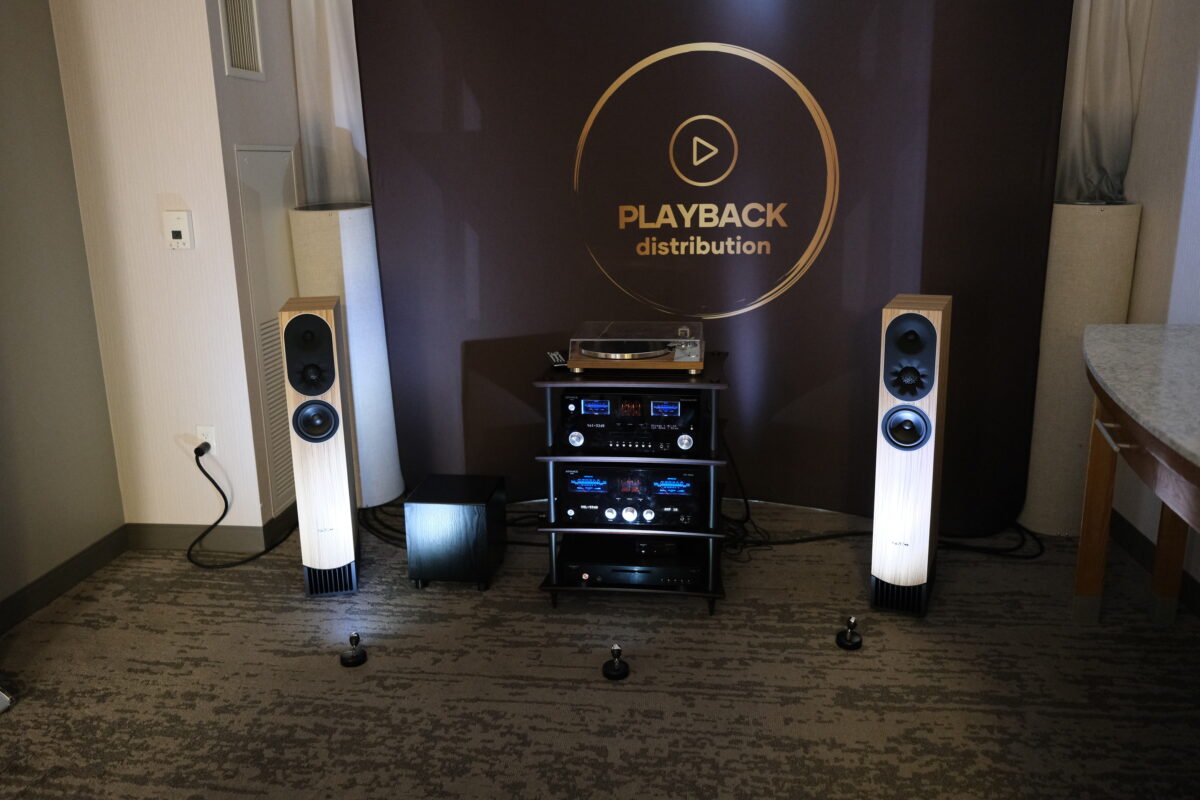
PMC’s Prophecy 7 isn’t just a new speaker, it’s part of an entirely new, mid-level line from PMC meant to overlap lifestyle and audiophile attributes. For fans of the former category, the $10k Prophecy 7 takes the form of a slim contemporary tower. For us audio geeks, the speaker contains some very some cool tech. For instance, the low frequencies are internally routed through a long transmission line that has a special dispersing vent in front, designed to produce clearer bass. Sure enough, at the show the 5.5” LF driver did indeed deliver good crisp bass; though, owing to the room, there wasn’t a lot of extension. The speaker also boasts surprisingly-sophisticated waveguides for the midrange and tweeter, leading to an unusually wide sweet spot.
Audacious Debuts
After 30 years of building speakers in Germany, Auer Acoustics made its U.S. debut at AXPONA. Based on the $45k V2, driven by nonpareil Soulution electronics, and wired with Crystal Cable, I’d say the company knows what it’s doing. A 3-way sealed design, the V2 spans the octaves from 30Hz–40kHz. The handsome enclosure is made of extremely dense layered tankwood. The resultant sound is clean and neutral with good spatiality in all dimensions.
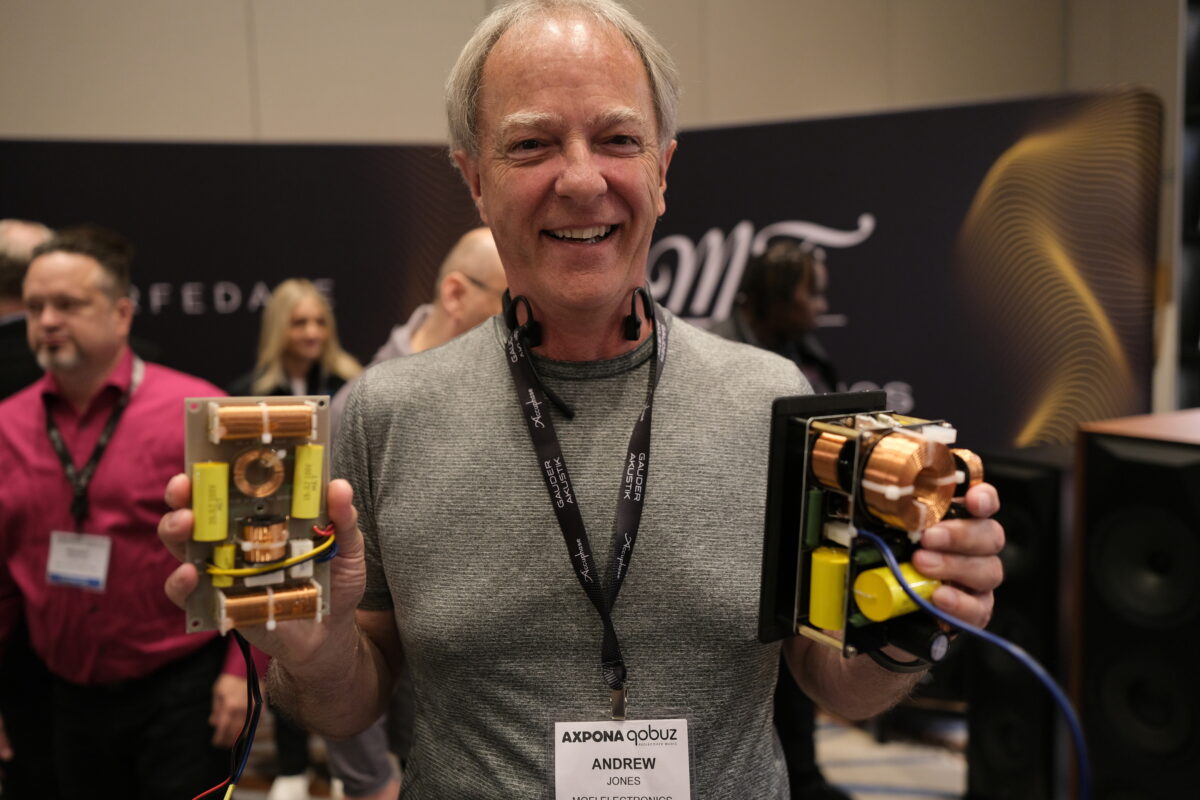
Whenever designer Andrew Jones works on a speaker, great things result. At AXPONA, he launched the Master Edition of the MoFi SourcePoint 10. The difference between the Master Edition and the now-discontinued regular SP10 is primarily in the crossover, where Jones is now using air-core rather than steel-core inductors. The 10” concentric driver remains unchanged, as does the sterling sound. Price is TBD (because, tariffs), but the previous SP10 cost an unbelievably-low $3k/pair. Soon there will also be a kit that allows current SP10 owners to upgrade to the Master Edition. That price is TBD, too.
Utah-based RBH introduced the Unrivaled SFTR/AX ($33k) active speaker. In a unique twist, the side panels are custom-made for each pair, so buyers can order them in any desired shape. The speaker is considered active because the price includes an external 6-channel amplifier that feeds 200 watts to the AMT tweeters, 400 watts to the 8” midrange units, and 2000 watts to the dual 12” woofers in each channel. Taking advantage of the active crossover, RBH also includes a DSP-based equalizer. The sound at AXPONA was delightful: big, punchy, and crisp.
Yet another outperforming sub-$10k speaker was the Opera Quinta V.2 ($7k). The top of the entry-level Classic line, the new model saves money with wood-finish vinyl sides and faux-leather surfaces. You’d never know it wasn’t real wood veneer and leather over the enclosure’s HDF. Opera put the bulk of the budget into the sound, which was remarkable for the price. Among the speaker’s virtues are good balance, excellent coherence, and plenty of detail retrieval.
Subwoofer specialist Perlisten has a new flagship for its S-Series, the D8IS (price TBD but “under $20k” each; available this summer). The highlight of the speaker is its dual-opposing 8” carbon-fiber woofers. The arrangement is meant to cancel vibrations and, as a glass of water atop the speaker attested, it works. The package includes a 3000-watt amp and full EQ slope control. In the less-expensive R-Series, Perlisten also introduced the R8 (approx. $1500 each; available this summer), a small cube that uses much of the same tech as the S-Series.
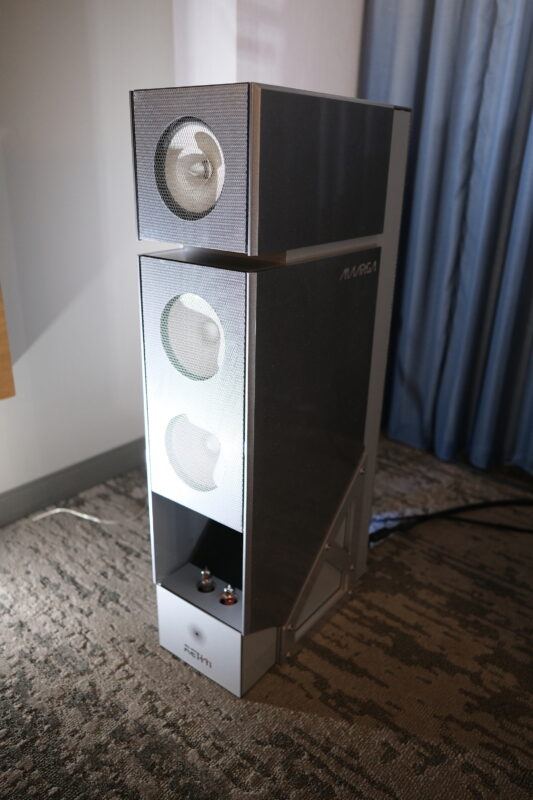
The Maarga (approx. $20k) from Rethm is a fully active speaker with unusual versatility. The dual woofers, in an Isobarik arrangement, are driven by a 600-watt Hypex Class D amp with a tubed output stage. The mid/tweeter is a concentric driver and there’s a 12-watt Class A amp for that. Users have full control of relative volume and crossover points, as well as the ability to bypass the mid/tweeter amp altogether and use their own.
In Other News….
SVS introduced a new sub, the 5000 R|Evolution ($2k each). The hefty unit sports a single 15” driver with a 30-pound motor and dual voice coils. The internal amp can deliver 2000 continuous Class D watts and 5000-watt peaks.
Horn and horn/dynamic hybrids were big at AXPONA. Volti Audio’s Vittora ($50k), is a 3-way pure horn speaker with a 15” folded-horn woofer. Sensitivity is a staggering 105dB, meaning the Vittora can be driven by as little as 0.1 watt! As for hybrids, Pure Audio Projects launched the Duet 15 ($7540), consisting of a 15” dynamic woofer and a horn mid/hi driver. Sold direct, the Duet 15 had a very open, unforced sound.

Another horn/dynamic hybrid came from venerable Klipsch, which introduced the $15k La Scala. The speaker, with a 12” ported woofer and a horn tweeter, looks and sounds very much like a Klipsch. For $3500, you can buy it with an active crossover. Finally, a brand-new company, O Audio, launched the Icon 12 hybrid for $23,400. It has a 12” dynamic woofer and a horn mid/tweet, which together span the octaves from 28Hz–20kHz.
Another trend in my category was active speakers. Along with those already mentioned, there was the ATC SCM 20 ASL ($10k+). This is the company’s smallest active speaker, and like all ATC products, every part is made in house.
A company new to me, Kii, introduced the model 7 ($8k), which is not only active but can directly connect to Tidal and Qobuz. The speaker is Roon Ready and has side-firing woofers. Lastly, although jPorter of Texas has been in business for five years, this was its first AXPONA. There, it launched the Wellington Active Tower ($20k), which has dual-opposed 9” mid/bass drivers and a transmission-line beryllium tweeter. You can have its balsa-birch enclosure in any color you’d like.
I’ll close with the incredible Bacch DrC2 ($20k), a complete 3-D desktop system from the folks at Theoretica Applied Physics. From just two small speakers, you get realistic surround sound.
Best of Show
Best Sound (cost no object): Though Stenheim gave it a run for the money, the big Acora/VAC system was unparalleled in its ability to portray instrumental timbres, scale, and dynamics in a realistic manner. Spatially, nothing came close.
Best Sound (for the money): A tie between the little Acora MRB with the VAC Essence FoiQs ($38k total system) and the not-so-little mbl 126/C41/C21 trio (also $38k total). Both made sound you’d never expect at this price range.
Most Significant Product Introduction: Rockport Lynx. Although $78k isn’t cheap, it’s a bargain for Rockport’s latest and one of its best.
Most Significant Trend: Excellent under-$10k speakers. In the past, this price point has yielded mostly disappointments. Not this year. I heard at least half a dozen circa-$10k speakers I’d be happy to own myself.
Most Coveted Product: Stenheim Ultime 2. These speakers are well out of my price range, but if I could afford them, I’d buy them. They look and sound equally beautiful.
Tags: LOUDSPEAKER FLOORSTANDING AXPONA STANDMOUNT SHOW REPORT

By Alan Taffel
I can thank my parents for introducing me to both good music and good sound at an early age. Their extensive classical music collection, played through an enviable system, continually filled our house. When I was two, my parents gave me one of those all-in-one changers, which I played to death.
More articles from this editorRead Next From Show
See all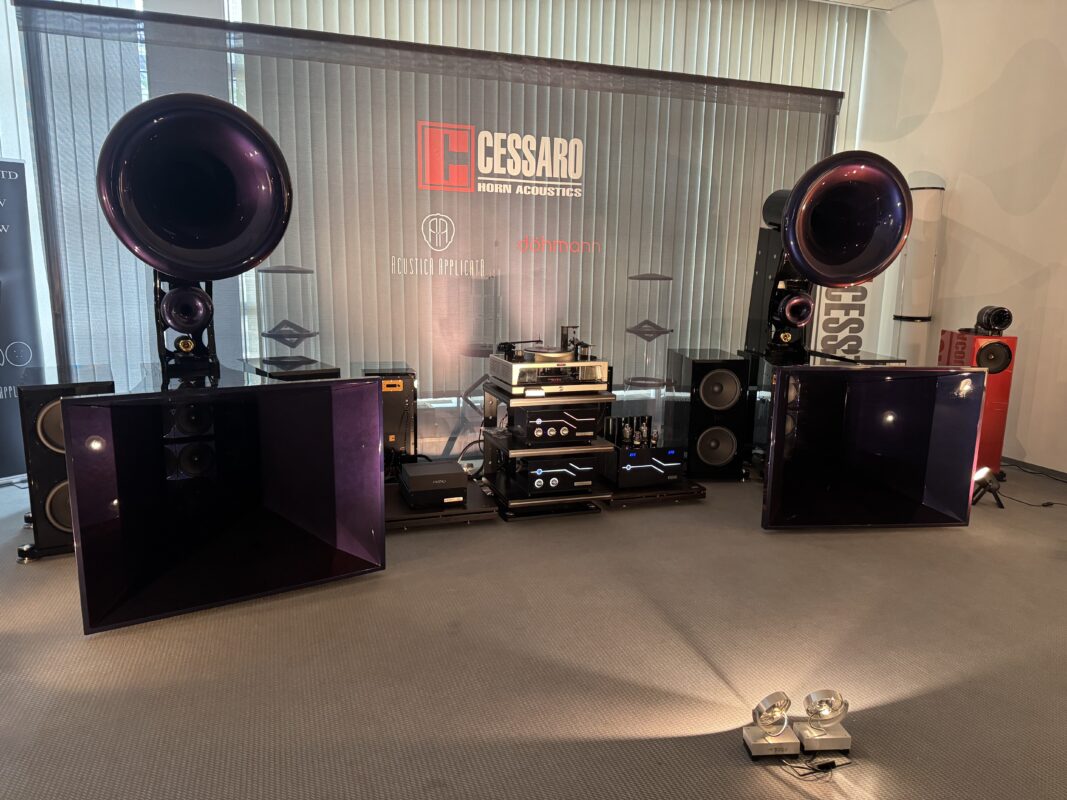
High End Munich 2025: Highlights
- May 30, 2025
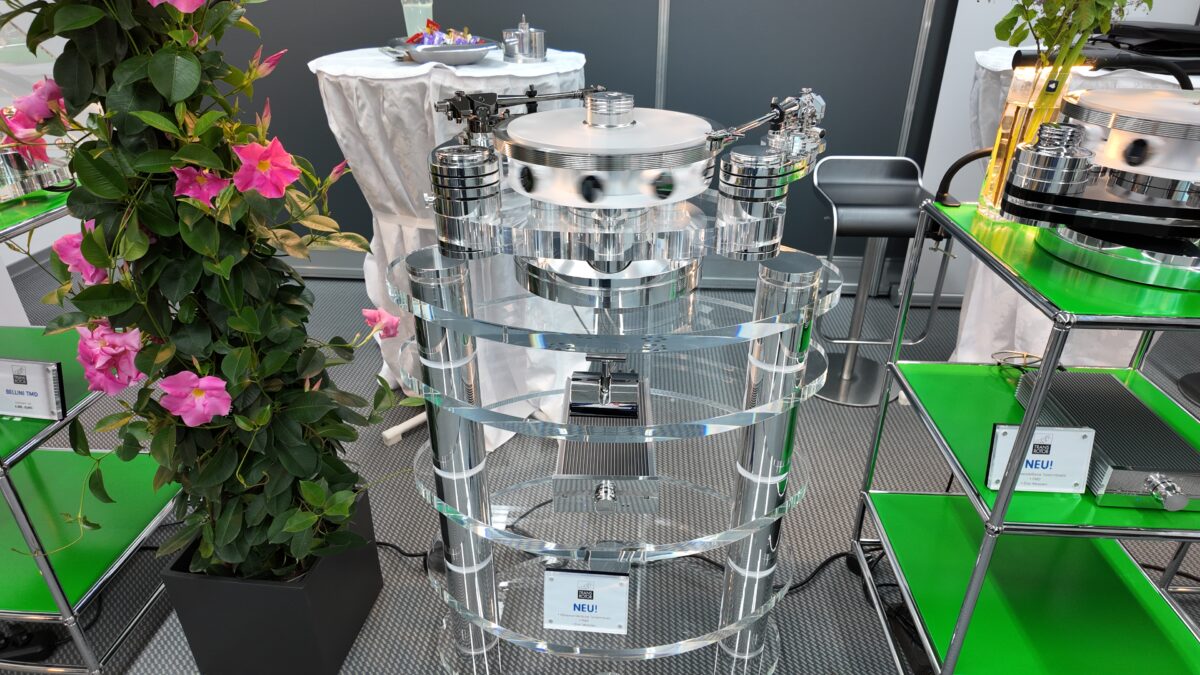
High End Munich 2025: Michael Fremer on Analog
- May 30, 2025
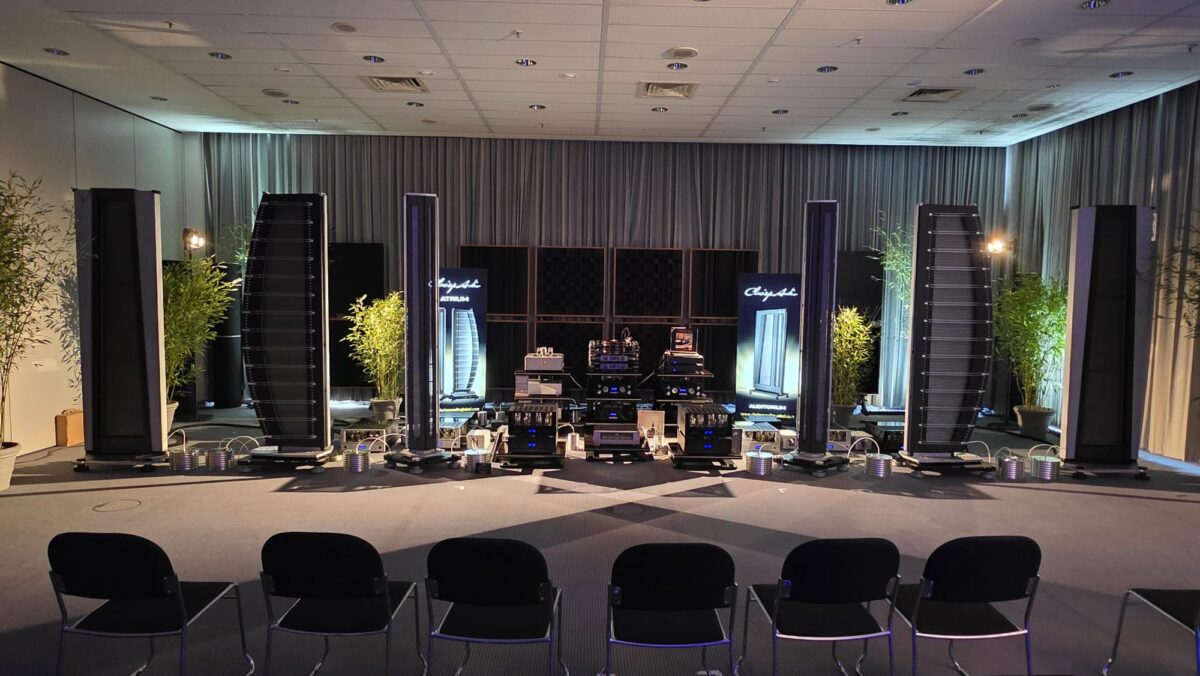
High End Munich 2025: New Loudspeakers under $50,000
- May 30, 2025










